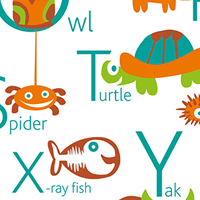Đề thi thử THPT Quốc gia môn Tiếng Anh năm 2018 có đáp án + giải thích chi tiết (Đề số 4)
Đề ôn thi THPT Quốc gia môn tiếng Anh
Mời các bạn vào tham khảo Đề thi thử THPT Quốc gia môn Tiếng Anh năm 2018 có đáp án + giải thích chi tiết (Đề số 4) do VnDoc.com sưu tầm và đăng tải nhằm mang đến cho các bạn nguồn tài liệu ôn tập hữu ích, chuẩn bị tốt nhất cho kì thi THPT Quốc gia quan trọng sắp tới. Sau đây mời các bạn vào tham khảo.
SECTION A (8 points):
Mark the letter A, B, C, or D on your answer sheet to indicate the word whose underlined part is pronounced differently from that of the rest in each of the following questions.
Question 1: A. chorus | B. Christian | C. cholesterol | D. check |
Question 2: A. enough | B. rough | C. tough | D. though |
Mark the letter A, B, C or D on your answer sheet to indicate the word that differs from the other three in the position of primary stress in each of the following questions.
Question 3: A. ordinary B. emphasis C. decompose D. calendar
Question 4: A. comfortable B. necessary C. community D. memorable
Mark the letter A, B, C, or D on your answer sheet to indicate the correct answer to each of the following question.
Question 5: The school was closed for a month because of a serious________ of fever.
A. outbreak B. outburst C. outset D. outcome
Question 6: Many plant and animal species are now on the_________ of extinction.
A. danger B. border C. verge D. margin
Question 7: There you are____________: the person I was looking for.
A. utter B. correct C. ever D. very
Question 8: Patient: "Can I make an appointment to see the doctor, please?" Receptionist: “_________ ”
A. Not at the moment. He can't be disturbed. B. OK, you will need to check my diary.
C. OK, let me just checkthe diary. D. Have a seat and I'll be with you in an hour.
Question 9: My wallet___________ at the station while I for the train.
A. must have beenstolen/ was waiting B. should have stolen/ had been waiting
C. will bestolen/ am waiting D. had to steal/ would be waiting
Question 10: The new manager_________ very strict rules as soon as he had the position
A. laid down/ taken over B. put down/ taken over
C. lay down/ taken up D. wrote down/ come over
Question 11: Newspaper publishers in the States have estimated_______ reads a newspaper every day.
A. nearly 80 percent of the adult population who
B. it is nearly 80 percent of the adult population
C. that nearly 80 percent of the adult population who
D. that nearly 80 percent of the adult population
Question 12: “Wow! What a nice coat you are wearing!” – “_____________.”
A. Certainly. Do you likeit, too? B. I like you to say that
B. Yes, of course.It‘s expensive D. Thanks. My mother bought it for me.
Question 13: It’s not in my nature to_________ over the price of something.
A. haggle B. discuss C. challenge D. transact
Question 14: Although the conditions weren’t ideal for a walk, we decided to__________ a go of it.
A. make B. do C. run D. carry
Question 15: Her outgoing character contrast________ with that of her sister.
A. sharply B. thoroughly C. fully D. coolly
Question 16: She clearly joined the firm with a (an)__________ to improving herself professionally.
A. view B. aim C. plan D. ambition
Question 17: The curriculum at the public school is as good________ of any private school.
A. orbetter than B. as or better than that
C. as orbetter that D. as or better than those
Question 18: Where have you been? You were_________ to be here half an hour ago.
A. allowed B. had C. supposed D. thought
Read the following passage and blacken the letter A, B, C, or D on your answer sheet to indicate the correct answer to each of the questions.
Scientists do not yet thoroughly understand just how the body of an individual becomes sensitive to a substance that is harmless or even wholesome for the average person. Milk, wheat, and egg, for example, rank among the most healthful and widely used foods. Yet these foods can cause persons sensitive to them to suffer greatly. At first, the body of the individual is not harmed by coming into contact with the substance. After a varying interval of time, usually longer than a few weeks, the body becomes sensitive to it, and an allergy has begun to develop. Sometimes it's hard to figure out if you have a food allergy, since it can show up so many different ways.
Your symptoms could be caused by many other problems. You may have rashes, hives, joint pains mimicking arthritis, headaches, irritability, or depression. The most common food allergies are to milk, eggs, seafood, wheat, nuts, seeds, chocolate, oranges, and tomatoes. Many of these allergies will not develop if these foods are not fed to an infant until her or his intestines mature at around seven months. Breast milk also tends to be protective. Migraines can be set off by foods containing tyramine, phenathylamine, monosodium glutamate, or sodium nitrate. Common foods which contain these are chocolate, aged cheeses, sour cream, red wine, pickled herring, chicken livers, avocados, ripe bananas, cured meats, many Oriental and prepared foods (read the labels!).
Some people have been successful in treating their migraines with supplements of B-vitamins, particularly B6 and niacin. Children who are hyperactive may benefit from eliminating food additives, especially colorings, and foods high in salicylates from their diets. A few of these are almonds, green peppers, peaches, tea, grapes. This is the diet made popular by Benjamin Feingold, who has written the book “Why your Child is Hyperactive”. Other researchers have had mixed results when testing whether the diet is effective.
Question 19: The topic of this passage is
A. reactionsto foods B. food and nutrition C. infants and allergies D. a good diet
Question 20: According to the passage, the difficulty in diagnosing allergies to foods is due to
A. the vast number of different foods weeat
B. lack of a proper treatmentplan
C. the similarity of symptoms of the allergy to other problems
D. the use of prepared formula to feedbabies
Question 21: The phrase "set off" in lines 11 is closest in meaning to
A. relieved B. identified C. avoided D. triggered
Question 22: What can be inferred about babies from this passage?
A. They can eat almost
B. They should have a carefully restricted diet as
C. They gain little benefit from being breast
D. They may become hyperactive if fed solid food too
Question 23: The author states that the reason that infants need to avoid certain foods related to allergies has to do with the infant's
A. lackof teeth B. poor metabolism
C. underdevelopedintestinal tract D. inability to swallow solid foods
Question 24: The word "these" in line 16 refers to
A. foodadditives B. food colorings
C. innutritiousfoods D. foods high in silicates
Question 25: Which of the following was a suggested treatment for migraines in the passage?
A. Eating moreripe bananas B. Avoiding all Oriental foods
C. Getting plenty ofsodium nitrate D. Using Vitamin B in addition to a good diet
Question 26: According to the article the Feingold diet is NOT
A. verified by researchers as being consistently effective
B. available in book form
C. beneficial for hyperactive children
D. designed to eliminate foods containing certain food additives
Đáp án Đề thi THPT Quốc gia môn tiếng Anh năm 2018
1D | 2D | 3 C | 4C | 5A | 6C | 7D | 8C | 9A | 10A |
11D | 12D | 13A | 14A | 15A | 16A | 17B | 18C | 19A | 20C |
21D | 22B | 23C | 24D | 25D | 26A | 27D | 28D | 29A | 30C |
31B | 32C | 33B | 34A | 35A | 36A | 37B | 38A | 39D | 40B |
41C | 42A | 43C | 44A | 45B | 46B | 47A | 48A | 49C | 50D |
Đề thi thử THPT Quốc gia môn Tiếng Anh năm 2018 có đáp án + giải thích chi tiết (Đề số 1)
Đề thi thử THPT Quốc gia môn Tiếng Anh năm 2018 có đáp án + giải thích chi tiết (Đề số 2)
Đề thi thử THPT Quốc gia môn Tiếng Anh năm 2018 có đáp án + giải thích chi tiết (Đề số 3)
-----------
Đối với kì thi THPT Quốc gia thì luyện đề là một trong những hoạt động cần thiết và không thể bỏ qua để các bạn có thể tập dượt và đánh giá được khả năng của mình. Bên cạnh đó việc ôn luyện lý thuyết và bài tập theo mảng cụ thể, ví dụ như câu điều kiện, word form, trọng âm, trắc nghiệm ngữ pháp tiếng Anh, trắc nghiệm ..cũng rất hữu ích giúp các bạn đạt điểm cao trong kì thi quan trọng này.











